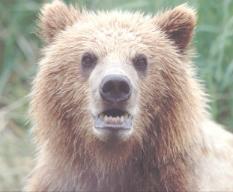
On December 4th, the Washington Biodiversity Council presented a thirty year plan to promote biodiversity within Washington State. Washington’s plan recognized six eco-regions which would be managed separately.
Biodiversity is the variation of life forms within a given ecosystem. Biodiversity is often used as a measure of the health of biological systems. The term "natural heritage" pre-dates "biodiversity", though it is a less scientific term and more easily comprehended in some ways by the wider audience interested in conservation. The most straightforward definition is "variation of life at all levels of biological organization". Another definition that is often used by ecologists is the "totality of genes, species, and ecosystems of a region.
Ecosystems benefit greatly when the level of biodiversity is high. There is a greater resistance to catastrophe. A wide range of crop varieties are available for human consumption. A variety of plant and animal species contribute to the search for new medicines and industrial materials. Intellectual value, leisure, cultural and aesthetic value increases. An ecosystem is able to react to changes in the local environment as the effects of global warming become apparent.
The WASHINGTON BIODIVERSITY PROJECT is an effort of the Washington Biodiversity Council to address one of the most pressing environmental issues of our time: How to conserve our state's native plants, animals, and ecosystems for current and future generations. After three years of work, the Washington Biodiversity Council has delivered the Washington Biodiversity Conservation Strategy: "Sustaining Our Natural Heritage For Future Generations". The strategy is designed to conserve Washington’s unique plant and animal communities. It was released in front of a large crowd attending the Biodiversity Conservation Conference in Seattle: "What Works, What’s Next".
The council, a diverse group representing landowners, environmentalists, government agencies, tribes, and others, has developed the strategy to lay out a path forward to enhance biodiversity in Washington. It also supports other priorities, such as the Puget Sound Partnership and efforts to address climate change. Three broad initiatives form the heart of the strategy—a new approach to defining priorities, fostering widespread landowner engagement, and measuring progress:
• Guiding investments on the land, through the use of a new tool which maps biodiversity value and threats at a landscape, regional scale;
• Improving incentives and advancing markets for landowners to provide tangible benefits for conservation on working lands and open spaces;
• Engaging citizens to work with scientists to inventory and monitor Washington’s biodiversity.
The Council sponsored two conservation pilot projects. The two projects, one on the east side of the state and one on the west side each received $20,000 from the Council, and ran for 18 months, January 2006 through June 2007. The general goals of the pilots were to demonstrate new models for promoting incentive-based biodiversity conservation tools, and to engage citizens in biodiversity conservation. The two projects have taken different approaches to these goals. The findings from the projects formed key components of the Washington Biodiversity Conservation Strategy. The pilot projects may also serve as models for other communities.
Citizen Stewardship of the Pierce County Biodiversity Network: Lower White River
The Council’s western Washington pilot project focused on the lower White River between Buckley and Sumner. This area retains significant functional riparian habitat that supports a variety of fish and wildlife species despite rapid urbanization. The lower White River corridor is a Biodiversity Management Area (BMA) in Pierce County. Landowners in Pierce County BMAs are eligible for reduced property taxes.
The Healthy Lands Initiative
The Healthy Lands Initiative worked to develop a shared community vision for how biodiversity conservation can be integrated with the economic and social needs of the North Central Washington region, including Okanogan, Douglas, and Chelan Counties, and the Colville Indian Reservation. This area is very rich in biodiversity and ecological function, and it provides a major migration corridor between Canada and the Columbia Plateau.
